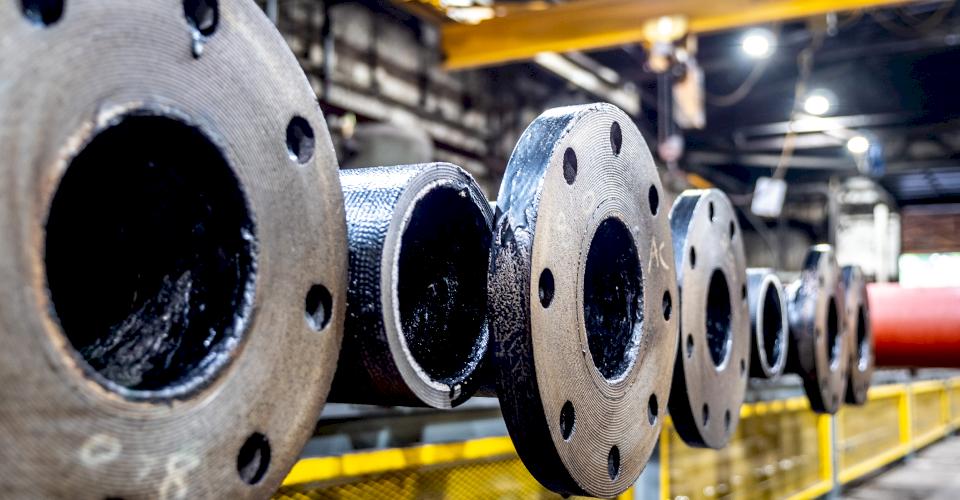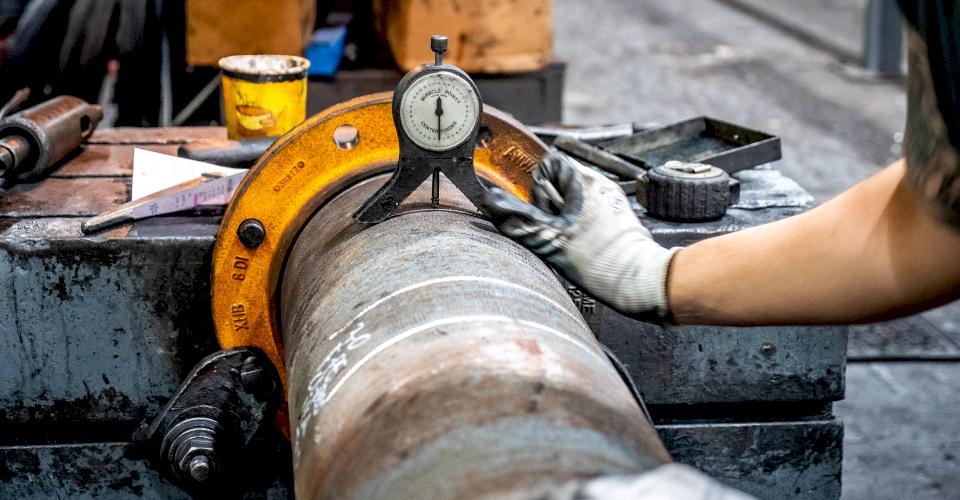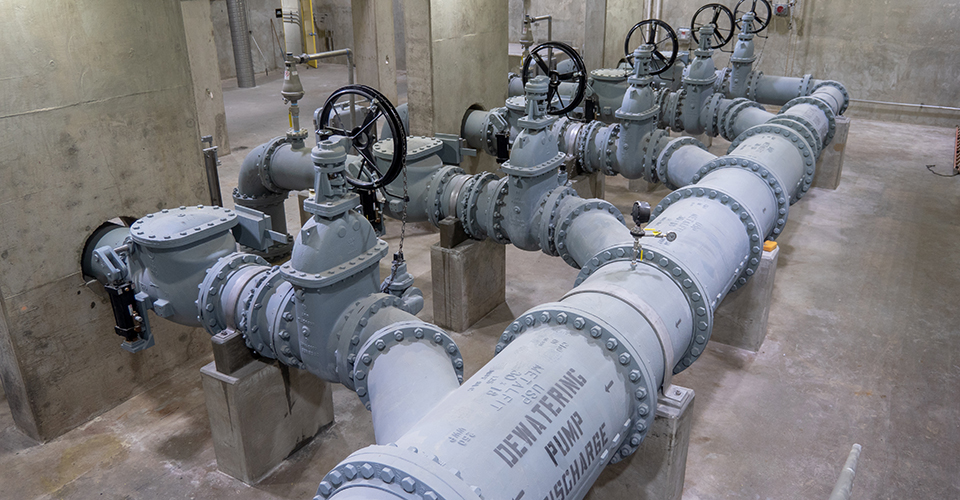Why all these different numbers when ordering flanges? Why can’t it be easy? Often, people get confused about the proper terminology and usage of Ductile Iron flanges versus steel flanges. We are often asked, “Why are there two different Ductile Iron flanges?” The truth is they can all be mated together if ordered correctly.
Things Can Get Fuzzy with Flanges
If flanges are mixed up, it would be the same as trying to mount an 18” car wheel to a 20” spindle/hub. The bolt circle just won’t work. In a nutshell, 125-pound iron is drilled to the same bolt circle as 150-pound steel. The hole diameter is also the same, so the bolt size is not an issue.
Now, the same applies to a 250-pound (aka Class 250 B16.10) iron flange and a 300-pound steel flange. They match up with no issues and the bolts can be the same. Now, do not think the numbers correlate to a pressure rating. They do not! They are both a 250-psi joint. Here is where things get fuzzy.
Temperature Is Key to Pressure Ratings
Temperature is the key to determining the pressure rating. Because metal strengths vary at higher temperatures, high-pressure ratings correspond with lower temperatures, which applies to water service. The noticeable disparity in pressure ratings between high-temperature and low-temperature situations is what prompted the American Water Works Association to issue its own set of standards specific to cold water service (not Titanic cold but more ambient).
Setting Standards for Fittings
The American Society of Mechanical Engineers /American National Standards Institute (ASME/ANSI) recognized the importance of reliable guidelines and were the first to create a set of performance standards for valves, flanges, and fittings in 1920. The American Water Works Association determined the ANSI/ASME pressure ratings were too conservative when used with water.
Through testing, they determined Ductile Iron fittings with dimensions conforming to ANSI/ASME B16.1 Class 125 could be rated at 250 psi. The AWWA C110 applies to Ductile Iron and gray iron flanges and fittings ONLY. If you see a specification that calls out ANSI/ASME B16.1 then you better be careful.
Yes, AMSE B16.1 covers the class 250 flange, but this also covers the Class 125 flange, which has the same facing and drilling pattern as AWWA C110. This standard only refers to the Class 125 flange. The difference in Class 250 Flanges (sometimes referred to as EH-extra heavy) is:
- They are costlier.
- They use special bolts.
- They have a more extended center to face dimension.
- They have a larger bolt circle.
- They have a thicker flange.
- They could have a .06 inch raised face.
- They will very likely have a longer lead time.
As these standards are designed for cold water service, their pressure ratings are higher than ASME/ANSI ratings for a fitting of similar size and material. These higher ratings are in place because ASME/ANSI fittings are expected to deal with more hazardous service situations such as steam! The Class 250 flange is an ANSI /ASME specification, not an AWWA, and it means the joint can withstand 250 psi at 373 degrees Fahrenheit. Incidentally, you will not find AWWA C110 grey iron fittings being made or sold routinely in the United States.
Don’t Fall Flat on Your Face
For what it’s worth, if you must connect to an existing flange, gray iron flanges are “flat-faced.” Ductile Iron flanges are typically flat-faced and occasionally, they have a raised face. Steel flanges also have either raised or flat faces.
Because of this potential incongruity, gray iron flanges can only be bolted to Ductile Iron or steel flanges if the raised face of the mating flange is removed, OR if the mating flange is also raise-faced. This precaution prevents the breaking of the gray iron flange when tightening the bolts.
Conclusion
More factors affect the pressure rating of a flange than its stated Class due to the following:
- There are differences in material
- There are differences in sealing methods (i.e., specialty gaskets)
- There are differences in operating temperatures.
Since most waterworks applications operate at ambient temperatures, the various temperature-pressure ratings in the B16 standards do not apply. The pressure ratings listed in C110 and C115 are generally effective for everyday water and sewer processes.
Due to severe vibration and startup surges, many pump connections have a 250-pound B16.10 flange. Then the consulting engineer may design a point away from the pump where they transition over from 250-pound to 125-pound via a flange adapter or a special flange pipe with different flanges on each end.
At times, selecting the correct flange for your project may be confusing but your local McWane Ductile representative is available to assist with any questions you may have. For more information on the flange fabrication, see this blog and video by my colleague, Matt Drummond, McWane Ductile Sales Rep.
At McWane Ductile, we offer multiple services extending far beyond the manufacturing of Ductile Iron pipe. From design to installation, we take great pride in providing education and assistance to water professionals throughout the water industry.











